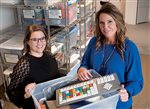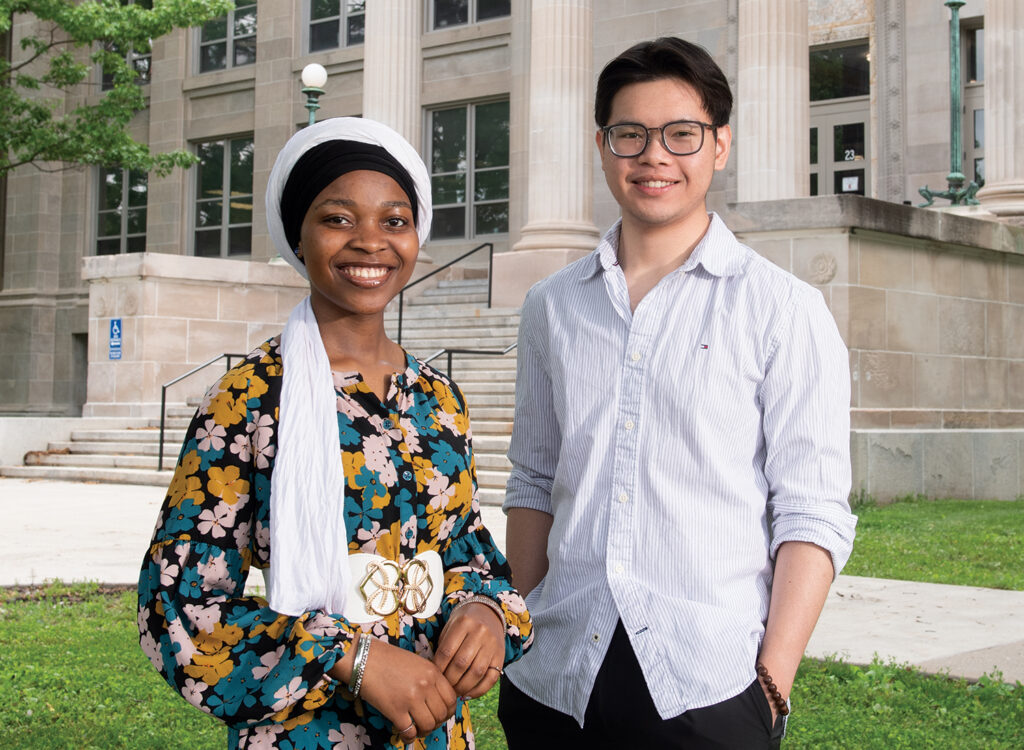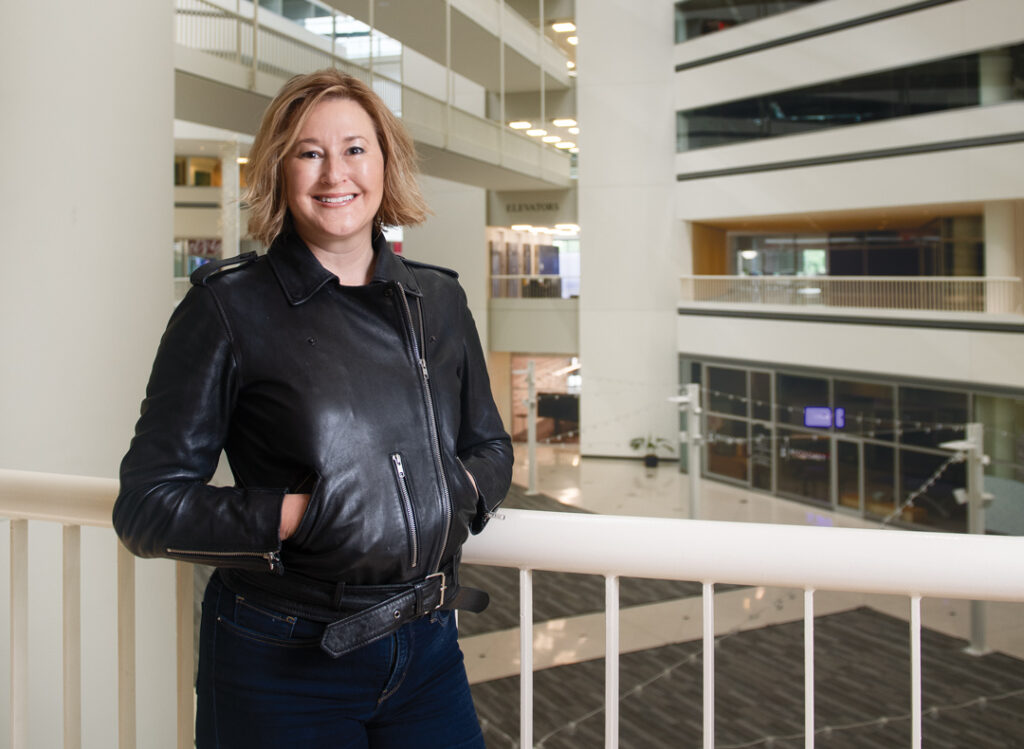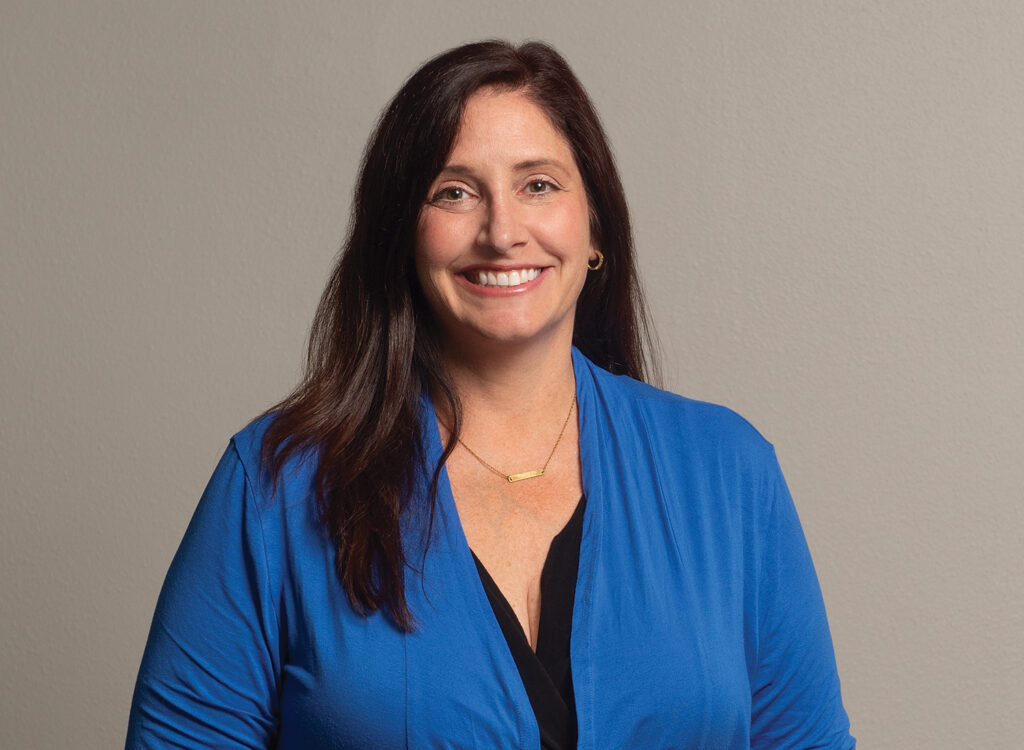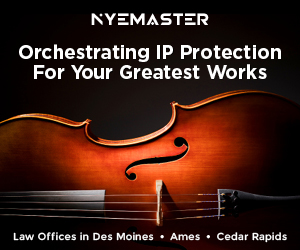What is assistive technology?
Iowans find solutions to barriers that affect daily living through Easterseals

EMILY BARSKE Jun 15, 2022 | 3:53 pm
7 min read time
1,604 wordsBusiness Record Insider, Innovation and Entrepreneurship
Earlier this year, a veteran got to see a photo of his grandson for the first time.
It was one of many tear-jerking experiences that the staff at Easterseals Iowa gets to experience on a weekly basis, said Tracy Keninger, rural solutions and assistive technology program director.
Through its assistive technology program, the Des Moines-based nonprofit can help provide technology when Iowans face a barrier to accomplishing an activity of daily living – whether that might be for employment purposes, for participating in recreational activities, or for taking care of oneself or a loved one. Keninger said Easterseals has its hands in just about anything in Iowa that relates to assistive technology.
“I’m just really proud of what we’re able to do to help people keep their jobs,” Keninger said. “Sometimes it means to have their first job ever because we worked with them to provide assistive technology. Sometimes it’s a matter of if we didn’t have this technology and they couldn’t stay at home, they would have to be placed in a more restrictive environment, like a nursing home.”
How it works
Through the assistive technology program, people can come in and try out different equipment to see what they like. Usually they have a monthlong trial period. Once they find something that works for them, Easterseals can help connect them with a funding source if they’re unable to purchase a device themselves. That source could be Iowa Vocational Rehabilitation Services, the Iowa Department for the Blind, Able Up Iowa, an employer, medical insurance, or various other public and private organizations and foundations.
With nearly 2,000 devices in the equipment library, the tools can help with a variety of needs. Some clients identify as having a disability, while others might not identify that way – perhaps preferring “I just have a problem using my hands sometimes” or “I struggle with stress” instead. Keninger said they work with a lot of people with newly acquired disabilities who may have recently been in an accident or had a recent medical diagnosis that affects their daily life.
She said there has been “a substantial increase in persons who are feeling isolated. So [they may request] technology to help them to be able to communicate with others, to stay in touch. … People who are working [are coming to us expressing] increased concerns with their brain health or mental health. So stress-relieving types of assistive technology, ways that they can be reminded to take a break, maybe some meditation type of reminders, things of that sort, has been quite substantial.”
The staff recognizes that helping someone be independent in one area of their life may help them find ways to be independent in other areas of life. Assistive technology can be as simple as a keyboard with enlarged letters or as sophisticated as a gaming system that works based on eye movement and blinking for someone who is unable to move below the collarbone.
The technology is always evolving and they do their best to stay on top of it while also dealing with tertiary challenges such as access to broadband, which is necessary for their technology to work. One client they’ve been working with uses sip-and-puff technology for gaming.
“We’re hooking everything … that he would use to control the computer with sip and puff movement, so it’s like a straw that he sips or puffs into something and the length of his sip or puffs, and how many in a row, control the computer system,” Keninger said. “So it’s just forever ever-changing.”
Some solutions may be easier to provide, but all solutions are worthwhile to the staff, she said.
“What this will do for him, to return to a task or recreational activity he loved before his disability, it’s monumental. But there’s no funding source that says, ‘Oh, it’s great he gets to do something he enjoyed.’”
Luckily in this client’s case, they worked with other community organizations and technology partners to donate different parts of the system for him.
Some assistive solutions like this can be expensive, and not all clients seeking help from Easterseals can afford to pay for the technology. “As exciting as [advancements in assistive technology are], it’s disappointing that so many persons could have their lives enriched, but the funding’s not there,” she said.
That’s why whenever they can, they work to help people find the money or request donations of technology. For the client using sip-and-puff technology, “it was so clear that if we can create some confidence in him to be able to [game], it could be a catalyst for him to think, ‘You know what, maybe I could work.’ … So we’ve spent endless hours trying to get this funded. … The truth is, we just don’t have the ability to do that for all persons, but it’s such a key component, in my opinion, for him to believe in himself.”
Employment accommodations
Mindy Burr, director of the Achieving Independent Methods program and vocational services for Easterseals, said there are two primary hesitancies she hears employers citing when it comes to employing more workers with disabilities: They don’t have a lot of background knowledge and are afraid of making a mistake, and they believe that accommodations would cost them a lot to provide.
“‘I’d rather not do it than mess up’ is what it really comes down to,” Burr said about perceptions some employers have. “[We focus on] educating them and showing them the skills of people with disabilities who have a range of capabilities.”
That education also extends to making employers more aware of what providing accommodations actually looks like.
More than half (56%) of employment accommodations cost nothing to implement, while the rest of accommodations have an average cost of $500 or less, according to the most recent data from an ongoing national employer survey conducted by the Job Accommodation Network. As far as bottom lines are concerned, this cost is much lower than the expenses that come with poor employee retention. Beyond that, providing accommodations and flexibility creates an inclusive environment that many studies have shown aids in employee retention.
“Often businesses get very scared of the word ‘accommodation,’ [thinking] that means it’s going to be expensive. Do I want to take on this risk? Because [they think] it’s going to cost [them] more money,” Burr said.
That’s where the assistive technology program comes in. If employers are concerned about providing an employee with an accommodation, when they don’t know whether it will even work or not, Easterseals can help employees try out assistive technology at no cost to the employer. If it works, it makes the employer more likely to provide it for the staff member.
“There’s just this misperception that technology is just so expensive,” Keninger said. “And that a reasonable accommodation is just outrageous. It can be – but it’s extremely rare.”
Easterseals works with both employers and employees when it comes to making workplaces more accessible.
“So we help [clients] find that job that’s the right fit for them. And then we help support them on the job,” Burr said.
Many accommodations are relatively easy to implement, and opening the conversation may be the most difficult part. Those requests might be things like:
- Someone needing picture lists on supplies because written lists are harder to see.
- Someone needing a color-coded schedule.
- Someone needing to be told directly that it’s time for a break because they have a hard time picking up on social cues.
- Someone needing a stool to sit behind a cash register or counter because long periods of standing are difficult.
The best part about creating more accessible workplaces? It’s often better for more than just the person who requested an accommodation.
“Sometimes businesses really are like, ‘Actually, that is easier for everybody to follow. We’re just going to keep that for everybody,’” Burr said.
Keninger said that while there’s been some movement on disability inclusion in all these areas of life, there’s still a long way to go.
“Sometimes your voice is able to be a catalyst,” she said. “What’s most important is that we don’t stop talking about it. We don’t stop trying to make a difference.”
Iowa’s lead Assistive Technology Act entity
Every U.S. state and territory receives federal Assistive Technology Act funds, and each state’s governor appoints the implementing entity for the federal efforts. Easterseals Iowa has served in that capacity for the past four years. The University of Iowa’s Center for Disability and Development is the fiscal agent because the federal government requires funds to go through a public entity and not directly to nonprofits. “Prior to us being the lead, you’re a subcontractor, which means we provided a lot of the same services. But now we have the ability to really have a direct linkage and connection,” Easterseals’ Tracy Keninger said. “So before, we would refurbish the durable medical equipment, but we weren’t really the lead to say, ‘Why are we getting all these requests for power wheelchairs? Why has that changed?’ Well, now we can say something’s going on here. And we’ve found out that these specialized chairs are being funded by insurance. So we can kind of connect our direct service to what we see with challenges with advocacy and legislation and try to be a catalyst for change.
Easterseals Iowa
Easterseals Iowa’s mission is to provide independence, hope and support. The organization provides services to people with disabilities or special needs and their families so they can have more equitable opportunities to live, learn, work and play in their communities. Learn more at www.easterseals.com/ia/.

